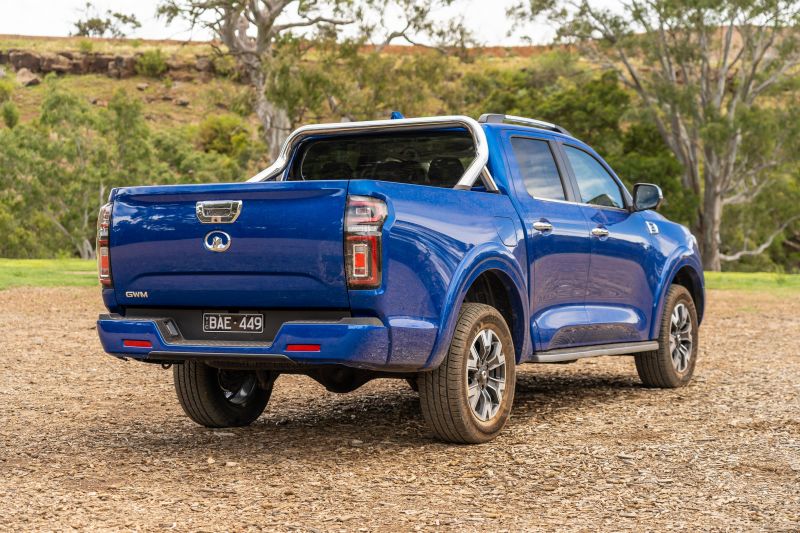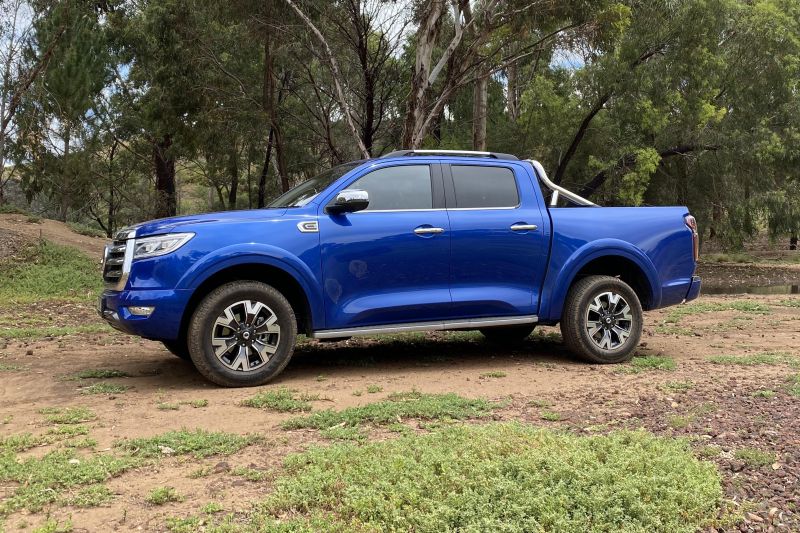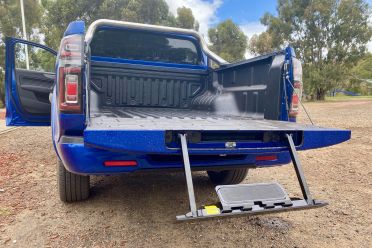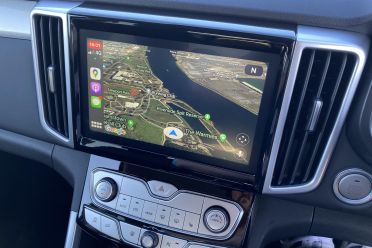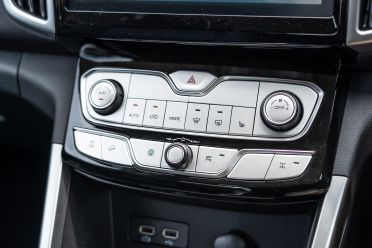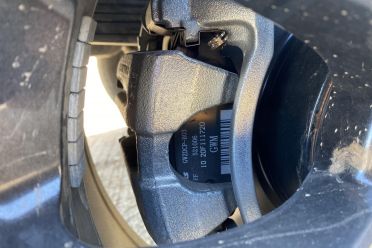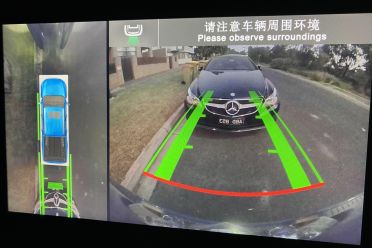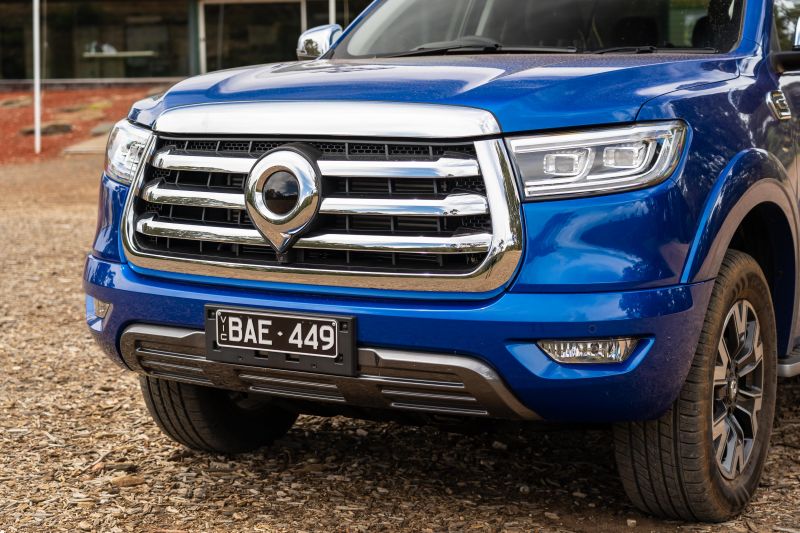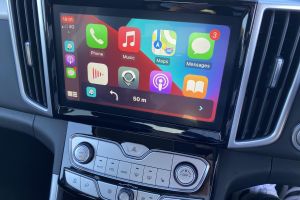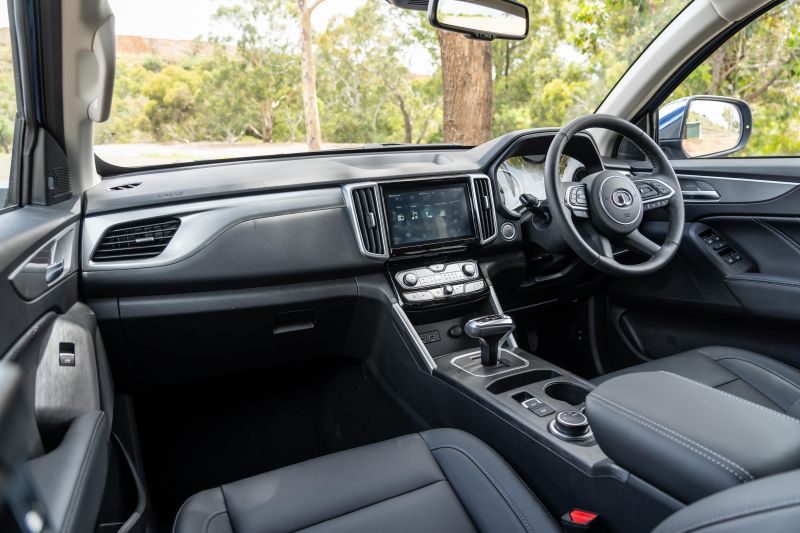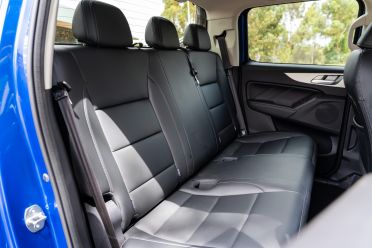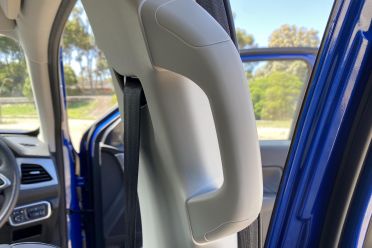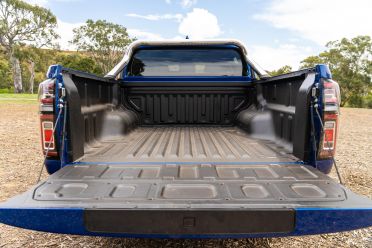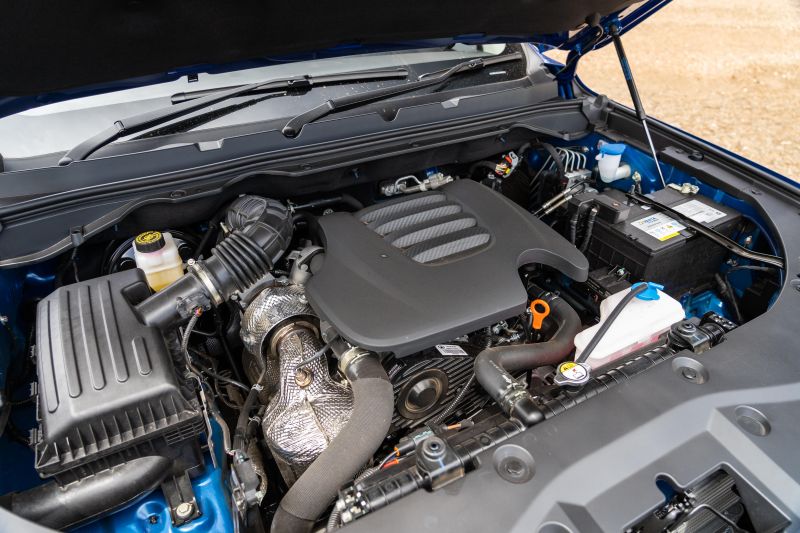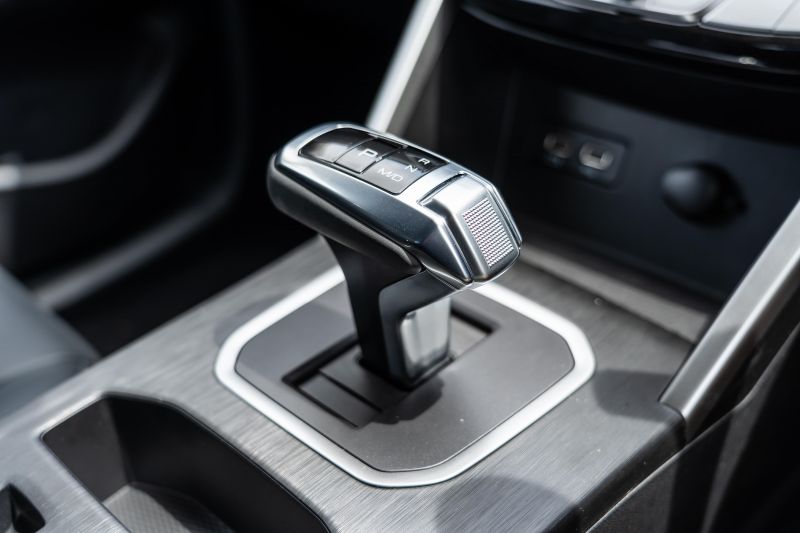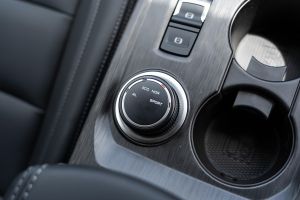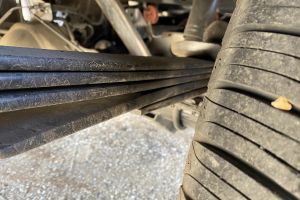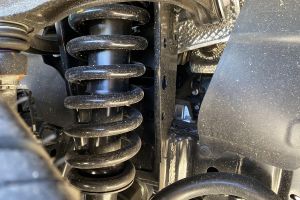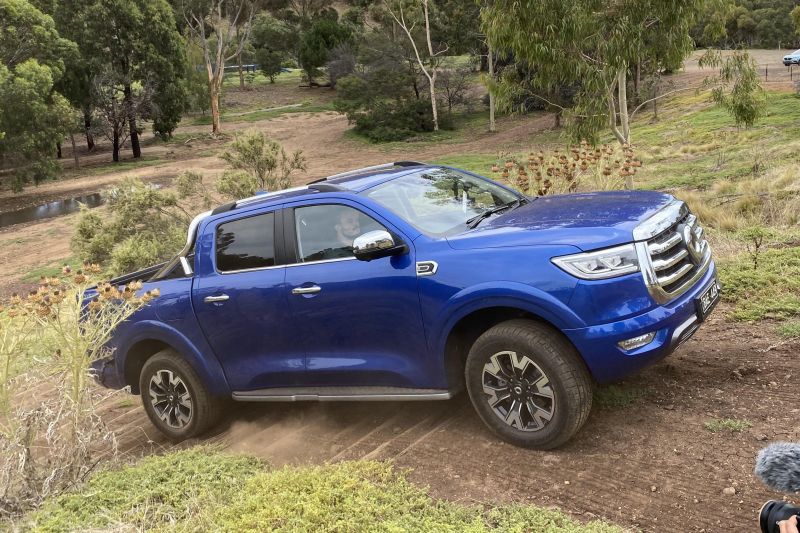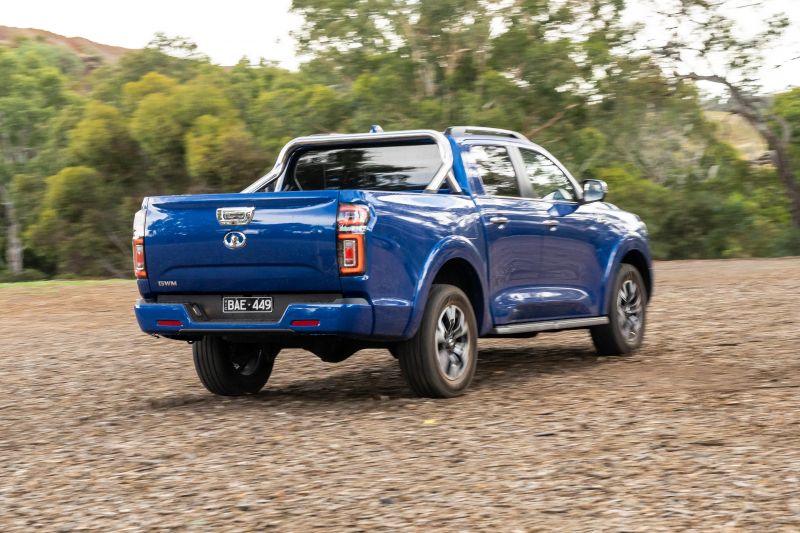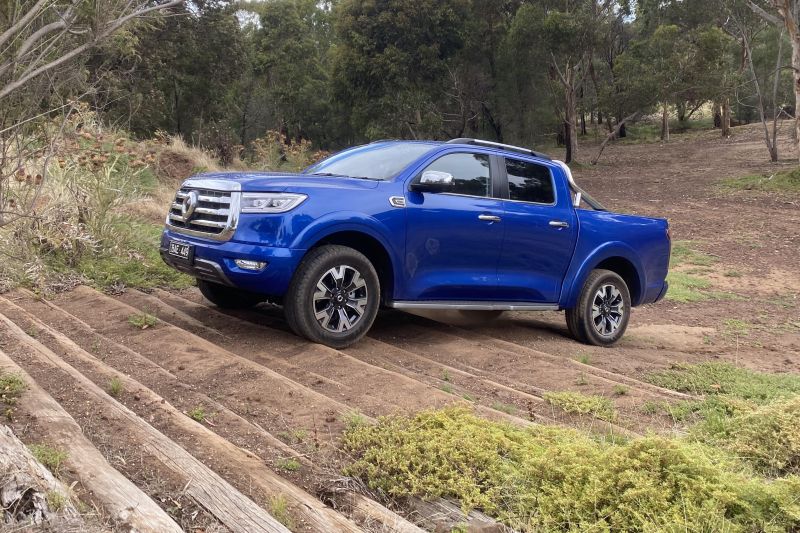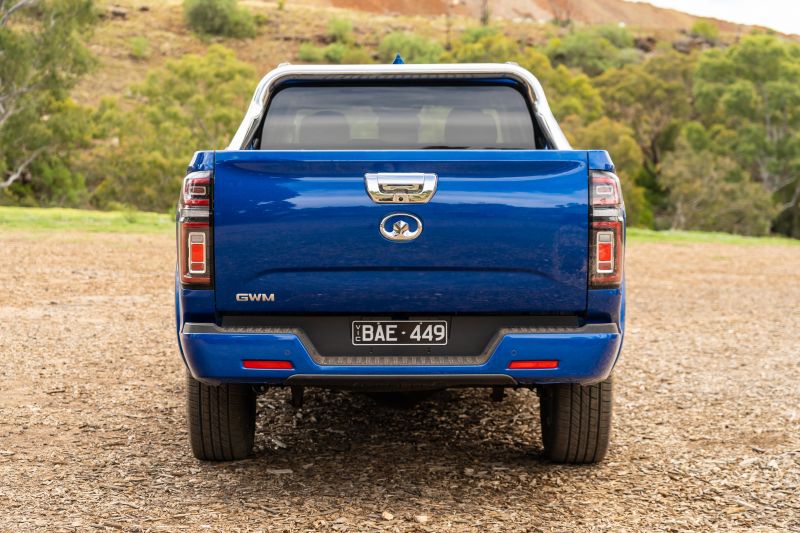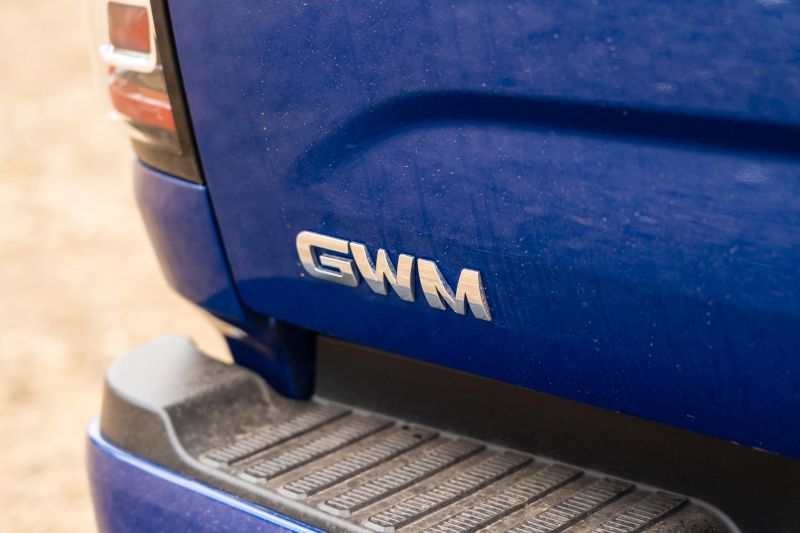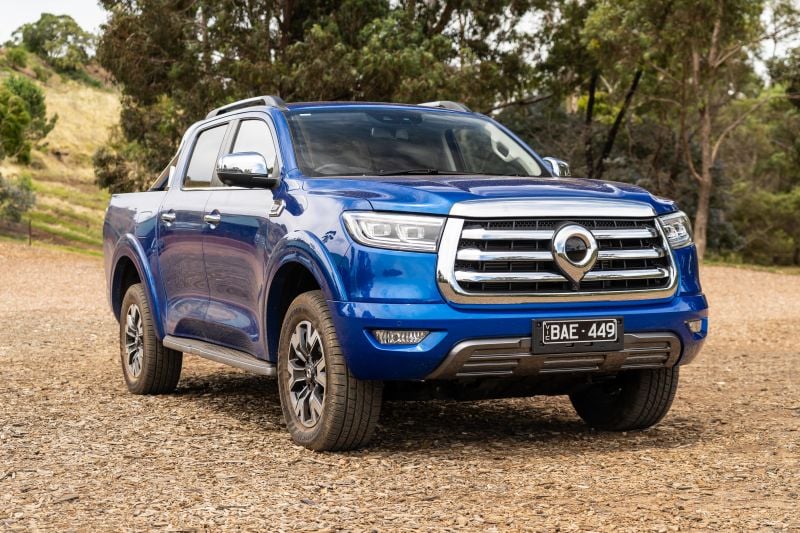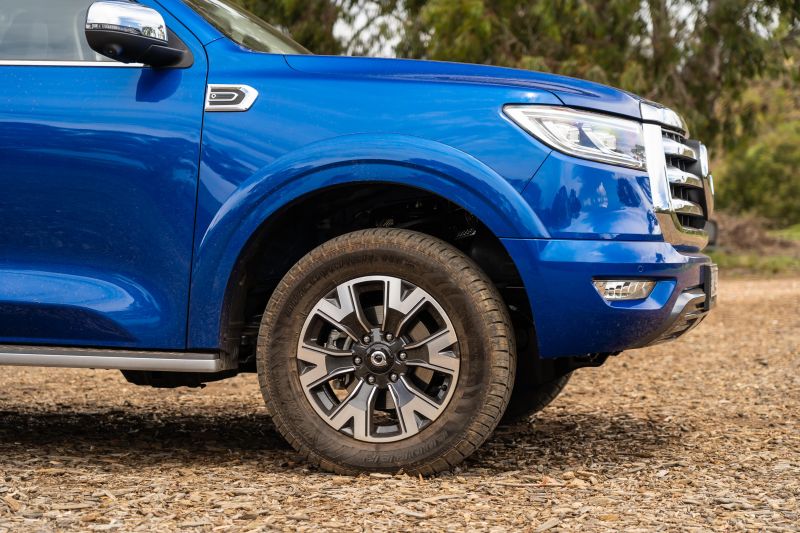Great Wall Motors has rebranded as GWM, and replaced the outdated Great Wall Steed with the new and logically named GWM Ute you see here.
Frankly, I wouldn’t have taken the Steed or its predecessor model if you gave them to me, but this new GWM Ute is an entirely different beast, with more than just a razor-sharp price on its side.
It’s far bigger and more sophisticated than the model it ostensibly replaces, and on paper is sure to tempt someone who wants a Ford Ranger, Toyota HiLux, Isuzu D-Max, Nissan Navara or Mazda BT-50 – but can’t afford to drop $60,000 on a high-end one.
This ground-up new-generation ute looks as commanding on the road as any of the aforementioned competitors, is loaded with features, and comes with a seven-year warranty backed by a factory distributor.
This is our first time at the wheel of the GWM Ute, which we’re testing in its mid-level specification, called the Cannon-L.
Does the newcomer from China stack up?

How much does the GWM Ute Cannon-L cost?
At the moment all GWM Utes are dual-cab, 4×4, automatic-equipped offerings.
The range kicks off with the GWM Ute Cannon spec at $33,990 drive-away, the Cannon-L grade driven here is $37,990 drive-away, and the flagship Cannon-X costs $40,990 drive-away.
For context, the drive-away prices for a HiLux 4×4 automatic dual-cab span from about $53,000 for a WorkMate to $75,000 for the Rugged X, while the Ranger equivalent is currently on offer from $47,490 for an XL to just under $70,000 for a Wildtrak.
At the cheaper end of the market, a trusty Mitsubishi Triton 4×4 dual-cab auto varies from $39,740 for the base GLX, through to $57,240 for the kitted-out GSR range-topper.
Perhaps the GWM’s main competitor is the LDV T60 from fellow Chinese automaker SAIC Motor, which kicks off from $30,500 drive-away for private buyers, and tops out at $42,000 for the Trailrider 2 version.
Of course, all utes are subject to ABN pricing deals as well as the extended instant asset write-off program offered by the tax office, so as always crunch the numbers specific to your situation.
What do you get?
Simply put, the GWM Ute offers more equipment for the money than its rivals do.
Even the base Cannon model offers a rear diff lock, four-wheel disc brakes, full-time 4×4 with low-range, reverse and kerbside camera views, 18-inch alloy wheels, LED headlights, side steps, and hands-free proximity key access.
Inside there’s a button start system, fake leather seats, paddle shifters, a 9.0-inch touchscreen (matching the class-leading dimensions of the D-Max and Mazda BT-50), Apple CarPlay and Android Auto, and three USB ports.
The Cannon-L costs $4000 over this and adds front parking sensors, a sports bar, a spray-in tub liner, a tailgate with pneumatic pumps and an integrated ladder step, a leather-wrapped steering wheel, heated front seats with power adjustment for the driver, climate control with rear vents, a 360-degree camera, privacy glass, a 220V socket behind the console.
Finally the $3000 more expensive again Cannon-X adds proper leather seats, a telescoping steering column (why isn’t this standard, GWM?), a 7.0-inch TFT trip computer, a wireless phone charger, adjustable steering modes, flip-down rear seats, and a power-adjustable passenger seat.
There are five colour choices: Pure White, Pittsburgh Silver, Scarlet Red, Crystal Black, and Blue Sapphire seen here.
There’s a strong argument that the mid-range Cannon-L is the pick of the bunch.
Is the GWM Ute safe?
Safety features across the range include seven airbags (dual front and front-side, full curtains, and a front-centre ‘bag).
All GWM Utes are fitted with forward collision alert and autonomous emergency braking that is designed to sense vehicles, pedestrians and cyclists, active lane-keeping assist (steering intervention), adaptive cruise control, traffic-sign recognition, and blind-spot monitoring.
A radar is mounted inside that giant badge up front, by the way.
There’s no ANCAP test score as yet. Expect the new GWM Ute to perform rather better than the old two-star Steed. The company says it’s working with ANCAP to get a test soon, and for the sake of reassuring interested buyers, it’s essential.
“We don’t yet have a date for ANCAP testing but we are working with them to secure a date soon,” said the company’s local division.
What is the GWM Ute Cannon-L like on the inside?
It’s a pretty well-considered interior.
There are no glaring build quality or panel-fit deficiencies, and the materials used are tactile for the most part – glossy black inserts excepted. There’s also extensive sound deadening visible in the front quarter panel, though the door apertures.
The console and door bins are big, the heated seats comfortable, the air conditioning buttons idiot-proof, and the switchgear and dials are actually made to a high standard. Another test, in which I tried to wobble the transmission tunnel, showed some solidity evident in the build.
The centre touchscreen is equal-biggest in class, and the 360-degree camera’s resolution is crisper than in some high-end SUVs we’ve sampled. You can even change the colour of the vehicle animation used in the camera feed, which is a small but thoughtful touch.
Proper sat-nav would be nice, but the wired Apple CarPlay and Android Auto phone mirroring are great for mapping so long as you have reception.
One gremlin is the central trip computer, which always wants to default away from its digital speedo function in favour of showing you what the active cruise control and lane assist are up to. You can hold a button on the wheel to override it, but that’s an irritant.
There were also some serious sun reflections off the grainy plastic used to cover the steering column, which often rendered the dials and screen behind the perspex cover less-than-clear. Again, a small tweak would fix this problem rapidly.
As the table below demonstrates, the GWM has a longer wheelbase than its rivals, and that translates to seriously spacious back seats – I’m 194cm and had copious room behind my own ideal driving position, more so than in most – if not all – competitors.
Rear-seat occupants also have their own vents, a USB point and 220V power socket, as well as handles located both overhead and on each B-pillar. There are also child-seat attachment points and curtain airbags that extend to the second row.
The tub is 1520mm length-by-width (above the arches) and comes with a good quality protective liner, plus a tailgate with pneumatic shocks (unique in the class to my knowledge) and a nifty pull-out step ladder in the tailgate.
| GWM Ute | Ford Ranger | Toyota HiLux | |
|---|---|---|---|
| Length | 5410mm | 5446mm | 5330mm |
| Width | 1934mm | 1977mm | 1855mm |
| Height | 1886mm | 1821mm | 1815mm |
| Wheelbase | 3230mm | 3220mm | 3085mm |
| Clearance | 194mm | 237mm | 216mm |
What’s under the bonnet?
A 2.0-litre variable geometry four-cylinder turbo-diesel making 120kW of power at 3600rpm and 400Nm of torque at 1500rpm through to 2600rpm.
It’s mated to a torque-on-demand, always-available four-wheel drive system that defaults to the rear wheels, but it also has a low-range gearing mode and lockable rear diff.
The standard (and only) transmission offered is an eight-speed automatic supplied by Germany-based firm ZF. It’s the only ute out there in the class with an electric parking brake and Auto Hold.
Combined-cycle fuel economy is listed at 9.4 litres per 100km. The best I saw was 9.8L/100km and the worst was 12.0L/100km, including some off-bitumen driving.
The towing capacity was recently confirmed as 3000kg – 500kg shy of the class leaders.
Just to give some context, this puts the GWM’s outputs below the flagship 2.0-litre Ranger (157kW/500Nm), 2.8-litre HiLux (150kW/500Nm), 3.0-litre D-Max/BT-50 (140kW/450Nm), 2.3-litre Nissan Navara (140kW/450Nm), and 2.4-litre Triton (133kW/430Nm).
However, it edges the 2.0-litre LDV T60 (120kW/375Nm), and eclipses the base 2.4-litre HiLux WorkMate (110kW/400Nm) and 2.2-litre Ranger XL (118kW/385Nm).
How does the GWM Ute Cannon-L drive?
You have a commanding view of the road as you’d expect, and the seats are both nicely trimmed and supportive. The electric adjustments are ample, though a telescoping steering column should be standard.
The steering itself has plenty of assistance to take the armwork out of urban driving, though if you twist a rotary dial on the transmission tunnel and engage Sport mode, it gains some weight.
The engine is commendably refined and quiet, from both the outside and inside (70dB at 100km/h on a B-road, which is in line with rivals).
Moreover, the eight-speed automatic felt pretty non-intrusive, and has a sufficiently tall eighth to allow relaxed highway cruising.
It’s not overflowing with grunt, as the 12.0-second 0-100km/h dash tells you, though it’s sufficient to handle overtaking and slipping into gaps. This is especially true if you’re hopping out of a previous-generation ute of some sort, which would likely be slower.
There is some momentary throttle lag – it might be the mapping, or the turbo spooling – following which the ute spurts you forward. We’d suggest this torque delivery be smoothed out as an update, especially for use off-road.
It feels quite stable and planted on the road, and those good quality Cooper tyres keep road roar at bay while supplying you with decent traction.
I was also quite impressed with the way the Cannon-L floated over potholes, and handled badly corrugated and ungraded gravel roads. The ride stayed relatively comfortable, and the unladen tub largely avoided skittering and jumping about.
The stability control tune is also well-judged – an emergency swerving manoeuvre on gravel triggers the system, but rather than killing torque delivery it simply nudged the car back into shape. This shows that GWM put some degree of effort into the engineering.
The GWM also has disc brakes at the rear, which is unusual in a class where the top sellers have drums, and the braking performance was fine.
If there’s an area where real improvement could be made, it’s handling. No, we don’t expect a work ute to handle like a hot hatch, but the GWM demonstrated more body roll against lateral cornering loads than any Ranger does, and it could inspire more confidence on country sweepers with a small damper/spring tweak. Something to ponder, GWM…
We did some mild off-roading, up stacked logs, down a rocky path, across offset moguls, and over some sand. It was up to those duties without fuss, though we’ll withhold judgement on anything more hardcore for now.
Rather than using a part-time or fixed-torque full-time 4×4 system, it has a torque-on-demand 4WD system that defaults to the rear (decouples the front wheels in Eco mode) and allocates torque front-wards when the rear tyres lose grip.
We saw this work effectively enough, when the rear tyres began spinning on sand and the fronts swiftly hooked up and pulled the car over some logs. The rear diff lock helps further by allocating torque side-to-side across the rear axle.
Payload is listed in the database at a respectable 1050kg. There’s leaf suspension at the rear and coils with stabilisers up front.
One thing worth mentioning is the lane-keeping system.
It’s actually relatively effective at steering the car between highways road lines that are clearly marked. However, it always defaults to being ‘on’ when you start the vehicle, and it takes a button press and two touchscreen taps to switch back off whenever you start up – if you don’t want the system engaged.
Given many Australian country roads are poorly marked and often only comprise a one-car-width sliver of bitumen with gravel either side, there are buyers who no doubt would rather the system stay off. A small calibration is suggested.
How much does the GWM Ute Cannon-L cost to run?
The GWM Ute gets a seven-year, unlimited-kilometre factory warranty, along with five years of free roadside assist. That warranty term equals the SsangYong Musso, falls three years short of the Triton, and betters all the rest.
There are no service prices available as yet, though we know that the intervals are every 10,000km or annual (bar the first, which comes at six months).
We’d rather the intervals be 12 months and 15,000km-20,000km as most rivals offer, with the exception of the HiLux that needs a service every six months or 10,000km. Toyota’s advantage is that it has dealers everywhere and its pricing is very cheap.
CarExpert’s Take on the GWM Ute Cannon-L
To say I was pleasantly surprised by what the GWM offered would be an understatement.
It’s big and looks the part, the cabin is roomy and well-made, it’s loaded with features for the money, the ride quality and refinement are well-calibrated, and the warranty is reassuring.
There are a few little gremlins with the trip computer and active safety system interface that can be fixed with a running change, and we’d love to see some further refinements to the suspension.An ANCAP test is also a must, as well as a more powerful engine option down the track.
But at the end of the day, this is a hell of a lot of ute for $38,000 drive-away.
Better still, product like this might just further encourage the likes of Ford and Toyota to revisit their pricing. A Ranger and HiLux are better, but not twice as good as this GWM.
Click the images for the full gallery

